The second of Apple’s newest smartphones, the iPhone 7 Plus, is bigger, more expensive, has a few more features and actually lasts a day per charge. But is it worth buying over its rivals?
The largest in Apple’s smartphone range has always felt like it played second fiddle to the darling of the Apple’s eye, the regular iPhone. Two years since the launch of the iPhone 6 Plus, however, the iPhone 7 Plus (find here) has a new dual camera, longer battery life and more power, which make it feel like Apple’s paying it a bit more attention.
Remember 2014?
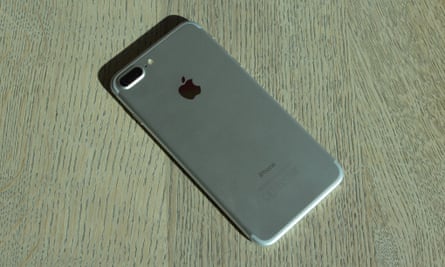
Like with the iPhone 7, one place where Apple hasn’t made a lot of changes is to the design. Side-by-side with either the iPhone 6 Plus or iPhone 6S Plus, you’d be hard pressed to tell them apart. There’s no headphone socket in the bottom, of course, and the antenna lines are a little less obvious, at least on the black version, but there’s still an ugly camera lump on the back, and that is even larger now. The back also looks a bit plainer and somehow cheaper with the top and bottom plastic edges created by the antenna bands.
The industrial design of the smartphone is now two years old, and it shows. The 5.5in 1080p screen is arguably the best LCD ever fitted to an iPhone - crisp, bright and colourful - but it has the same large bezels either side that the original iPhone 6 Plus had from 2014.
In two years things have moved on. The iPhone 7 Plus is now a very large device despite the screen being one of the smallest for a phablet. Compared to rivals with the same 5.5in screen the iPhone 7 Plus is 77.9mm wide, which is 3.2mm wider than the OnePlus 3 and 5.3mm wider than the Samsung Galaxy S7 Edge. The Samsung Galaxy Note 7, which has a larger 5.7in screen, is still 4mm narrower than the iPhone.
Why does width matter? The wider the device the harder it is to hold with one hand. No matter how much you might consider a phablet a two-hand device, at some point you will have to use it with one hand and that’s when people tend to drop their smartphones. At 77.9mm wide, with smooth rounded sides that feel nice but are slippery to try and grip, the iPhone 7 Plus is simply too wide for me to manage with a – not abnormal – hand span of 23cm.
That was the case for almost all phablets two years ago, but in 2016 you can have both a 5.5in or larger screen and make it manageable with one hand. I’ve lost count the number of times I’ve almost dropped the iPhone 6 Plus, iPhone 6S Plus and now the iPhone 7 Plus, when the same can’t be said of its modern competitors.
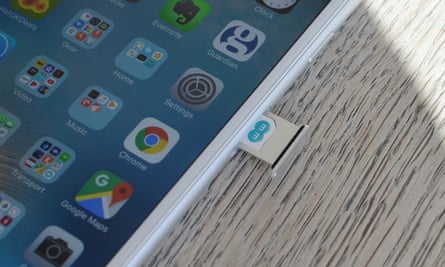
The iPhone 7 Plus, like its smaller sibling, is now waterproof to IP67 standards: 1m deep in fresh water for up to 30 minutes. It means that while going swimming with the iPhone 7 isn’t recommended, it will survive a drop into the washing up bowl or down the toilet.
It also has stereo speakers, which are louder than last year’s but do not provide good stereo separation. The bottom speaker is just as easy to block too.
Specifications
Screen: 5.5in full HD (401ppi)
Processor: Apple A10 Fusion
RAM: 3GB of RAM
Storage: 32/128/256GB
Operating system: iOS 10
Camera: Dual 12MP rear cameras, 7MP front-facing camera
Connectivity: LTE, Wi-Fiac, NFC, IR, Bluetooth 4.2, Lightning and GPS
Dimensions: 158.2 x 77.9 x 7.3mm
Weight: 188g
A good day of battery
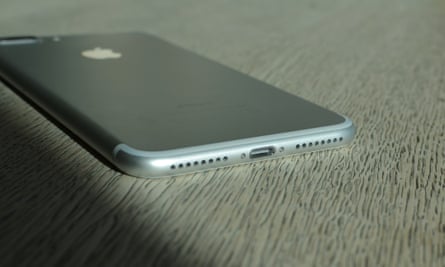
The iPhone 7 Plus has Apple’s new A10 Fusion processor, which, like most processors used in Android smartphones, has four processing cores split into two pairs. One is a high-performance pair of cores the other is a pair of energy efficient cores.
The iPhone 7 Plus feels as snappy as the iPhone 7. It has more RAM, but the difference isn’t noticeable. It feels a little bit faster than the iPhone 6S Plus in day-to-day activities, and significantly faster with some tasks such as photo processing in Prisma.
Using it as my primary device with three hours of app usage and browsing, hundreds of emails and push notifications, a couple of photos, five hours of music over Bluetooth headphones and the odd game of Jetpack Joyride during my one hour and 20-minute train commute to and from work, it lasted an average of just under 27 hours between charges, meaning it made it to around 10.30am the next day. It dropped about 5% in eight hours overnight with do not disturb mode active.
That kind of battery life means that you can be confident it will get you home after a night out. You will have to charge it each night, but unless you’re shooting 4K videos all the time, not during the day.
Which is a good thing, because fully charging the iPhone 7 Plus takes ages. It’s one of the slowest charging smartphones available. From zero to 100% takes over three hours 20 minutes, when most of the competition gets it done in close to an hour. Charging overnight is recommended as topping up in the day takes a significant amount of time connected to the charger.
iOS 10
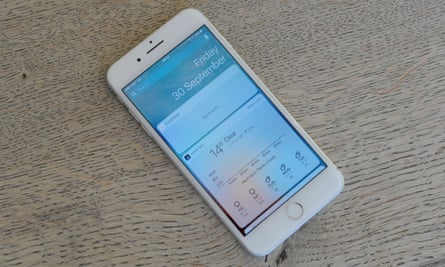
The iPhone 7 Plus runs the same version of iOS 10 as the iPhone 7 and last year’s iPhone 6S models. Improvements on iOS 9 include rich notifications, quick replies and widgets.
Like the iPhone 6 Plus and 6S Plus before it, Apple modifies a few things within iOS 10 for the iPhone 7 Plus. The icons on the home screen, the notification shade and the Control Centre rotate with the screen, making it easier to use in landscape. Productivity apps such as Mail and Calendar also have split-screen views for landscape, and while some are useful, others feel cramped and not a good use of screen space.
Touch ID, Home ‘button’ and Taptic engine
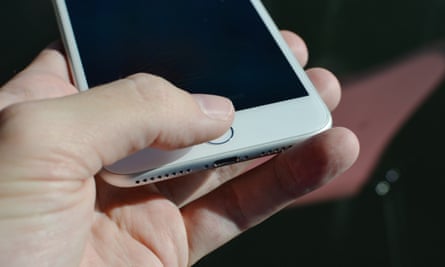
The Touch ID fingerprint scanner under the home button is the same as that fitted to the iPhone 6S Plus and iPhone 7. It is fast and accurate, although not quite the best in the industry. The home button is no longer a physical button, however.
It’s been replaced by a pressure sensitive pad. Pushing it activates the taptic engine, giving a little vibration that feels like the whole bottom half of the phone depresses like a big mouse button. Some will love it, some will hate it; I quite like it.
The taptic engine is one of the best features of the iPhone. With short sharp clicks, taps and vibrations for notifications and general feedback, it is genuinely the best thing Apple has created in years.
Dual Camera

Apple has jumped on the dual-camera bandwagon, following LG and Huawei. Apple’s approach is similar to LG’s: one camera has a standard wide-angle f/1.8 lens the same as fitted to the iPhone 7, the other has a slower f/2.8 lens with an effective two-times magnification compared to the standard lens.
It gives the iPhone a 2x optical zoom and up to 10x digital zoom, which is a mixed bag. Images captured with the standard camera, which has optical image stabilisation, are crisp, detailed and colourful, even in low-light conditions. They are the same as those captured by the iPhone 7 and are a big step up in quality and performance in my testing compared to the iPhone 6S Plus. For comparison, the Samsung Galaxy S7, S7 Edge and Note 7 have cameras with f/1.7 lenses.
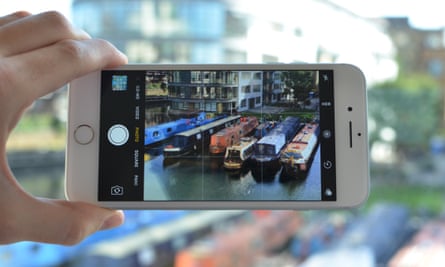
The other 2x camera, however, doesn’t perform nearly as well. In good outdoor lighting you can get some great shots. Poor outdoor lighting they’re not quite as good as the standard camera, but still decent. The problem comes when you’re shooting in average indoor lighting conditions, where the 2x camera falls down. It doesn’t have optical image stabilisation and isn’t anywhere near as good at letting light in, meaning images are often grainy and lacking in detail.
To the user, however, the two cameras are essentially one. The iPhone 7 Plus’s software blends the two images together from the two cameras, so you can slide your finger and zoom in fluid increments all the way to 10x magnification. It’s a shame, then, that Apple hasn’t chosen to offer a light information boosting system like Huawei’s on the P9 Plus, which uses the other camera to increase the amount of light information available, and therefore the detail and brightness of images taken in poor lighting conditions.
The 2x magnification proved more useful than I was expecting, but the digital zoom is still not worth using, particularly at its extremes – it’s simply artificially spreading the pixels out without adding new information, and the resulting photos look awful.
The 7-megapixel selfie camera is one of the best in the business, creating detail rich and colour accurate photos even under difficult artificial lightning conditions.
Where do I stick my headphone jack?
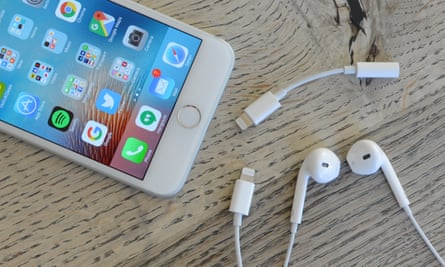
There is no headphone socket and that’s not exactly great. How much that bothers you will depend on how much you listen to music on your smartphone.
A set of Lightning EarPods are included in the box, which are terrible and can’t be plugged into anything else other than an iPhone or iPad. A £9 3.5mm Lightning adapter is also included, but I’ve already lost one in the two weeks since the iPhone 7 was released.
The biggest problem is that you can’t charge your phone and listen to music at the same time without some sort of ungainly adapter. Bluetooth headphones are an option worth exploring, but they are another thing to charge and another significant expense.
Observations
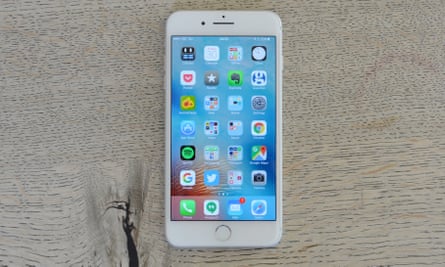
The home button needs skin contact to work, rendering sport armbands and some touchscreen gloves useless
You can’t unlock the phone without first activating the Home button
The slippery body and large size meant I frequently dropped the phone onto my face when lying on the sofa or reading in bed
Matt and shiny black are the two best colours, hiding the antenna bands best
It’s worth putting the phone in a case to add a bit of grip, but then it makes it even bigger to hold
The camera lump on the back looks a little like a small robot’s eyes
Price
The iPhone 7 Plus costs £719 for 32GB (buy here), £819 for 128GB (buy here) or £919 for 256GB in rose gold, gold, silver, black or jet black (buy here).
For comparison, the 5.5in Galaxy S7 Edge costs £639, the 5.7in Google Nexus 6P costs £449, the 5.5in OnePlus 3 costs £329 and last year’s iPhone 6S Plus cost £619 but now £599 (128GB is £699). Samsung’s Galaxy Note 7, which has suffered issues with its battery, costs £700 with 64GB of storage and a microSD card slot, which makes the iPhone 7 Plus more expensive than any of its top-end rivals.
Verdict
The iPhone 7 Plus will tick a lot of boxes for many iPhone buyers. It lasts a day per charge, it has dual cameras on the back, it has a larger screen and has most of the good things about the iPhone 7 including IP67 waterproofing. But it’s not a great phablet compared to the competition.
A two-year old design in a space that has had rampant innovation in device form, if not features, means phones with 5.5in displays no longer have to be hulking, high-priced monsters.
The perfect iPhone would have the battery life and camera of the 7 Plus in the body of the iPhone 7, but that’s not what’s on offer. It’s a compromise that you don’t actually have to make any more.
Pros: a day’s battery life, good dual camera and selfie camera, waterproof, taptic engine, good fingerprint scanner,
Cons: bulky, difficult to hold with one hand, no headphone socket, cannot unlock the phone with gloves or within an armband case, expensive, no removable battery, no memory expansion, can’t charge and listen to cabled headphones, very slow charging
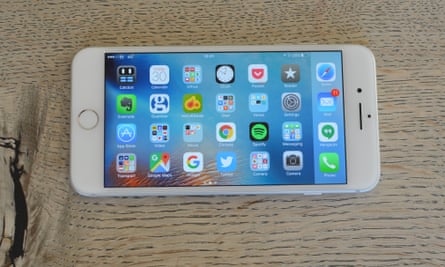
Other reviews
Samsung Galaxy Note 7 review: the king of the phablets returns, eventually
Samsung Galaxy S7 Edge review: this is the smartphone to beat
Huawei P9 Plus review: high-class phablet held back by sub-par software
LG G5 review: a power user’s friend that just misses the mark
iPhone 7 review: how good can a phone be if the battery doesn’t last even a day?
This article contains affiliate links to products. Our journalism is independent and is never written to promote these products although we may earn a small commission if a reader makes a purchase.
To find discount codes for major technology and electricals retailers, visit discountcode.theguardian.com
